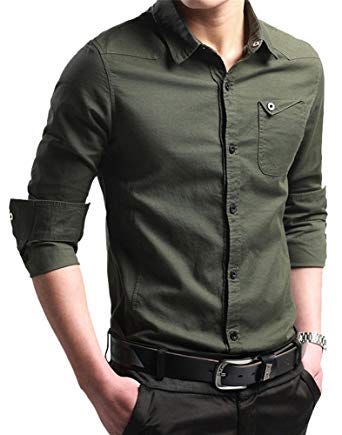
A lot of items of clothing are off-limits when you have — pardon the vulgarity — gigantic tits. Strapless dresses, bathing suits that lack underwire, almost everything that Urban Outfitters sells: all were closed to me from about seventh grade onward. And, for a long time, button-down shirts were on that list too. Each one that I tried just didn’t quite work. Either it was too sheer, or it rode up when I lifted my arms, or (almost universally) it gapped at the bust. It didn’t matter whether I was at the clearance section of Nordstrom Rack, the clearance section of H&M, or a thrift store. Nothing worked.
I was haunted, though, by images of women in perfectly crisp, perfectly fitted button-downs. I obsessed over them. It was the only look I wanted to emulate: wide pants; loafers or mules; earrings made from wire or acetate; and that white whale of a shirt, loosely tucked in, unfussy, and elegant. The outfits that inspired me were masculine, but with subtle nods towards femininity. They were the kind of thing you might wear to sip rose at a sidewalk cafe in Barcelona, or to your job as a ceramics curator at MoMA PS1, or to be Joan Didion. I restarted the hunt.
I had always assumed that women’s shirts would fit me better, but on my mother’s advice — a woman who spent her college years in Dr. Martens before they were cool, wearing men’s clothes fished out of Salvation Army bins — I broadened my search to the men’s section. Immediately I felt a difference. The fabric was thicker and more robust. Even at the same price point, the men’s shirts seemed sturdier and better made than the women’s. But I was wary of the fit. After all, weren’t these designed for a demographic that was generally boobless? How could they possibly accommodate my chest when the shirts that were specifically made for the purpose couldn’t?
Here’s the funny thing, though: when a garment is designed to fit a woman’s body, it is designed to fit exactly one woman’s body, and if that woman isn’t you then you’re shit out of luck. From the size and shape of the cups to the curvature of the hips, a piece of clothing can only conform to one possibility. That was why I either bulged out of or was swallowed by women’s button-downs. Different sizes were just scaled up versions of the exact same proportions.
When I tried on the men’s shirts I could let them consume me and still look cute. All it took to make a men’s large look like it was made for me was tucking it in at the waist. I couldn’t believe it was that easy. I bought four of them.
Shopping in the men’s section may be a tiny act of resistance against an industry that tries its darnedest to convince us that there’s one right way to exist in a female body, but I don’t think it’s meaningless. Of all the lines that fashion draws in the sand — of price, of size, of accessibility in general — gender is perhaps the categorization that can be crossed with the most ease (at least in a purely practical sense). You can’t buy a shirt you can’t afford. You can’t buy a shirt that doesn’t physically fit your body. But you can always head to the other side of the store and try something on that wasn’t made for you, and look amazing in it anyway.
The Life-Changing Magic of Men’s Button Downs was originally published in The Yale Herald on Medium, where people are continuing the conversation by highlighting and responding to this story.
